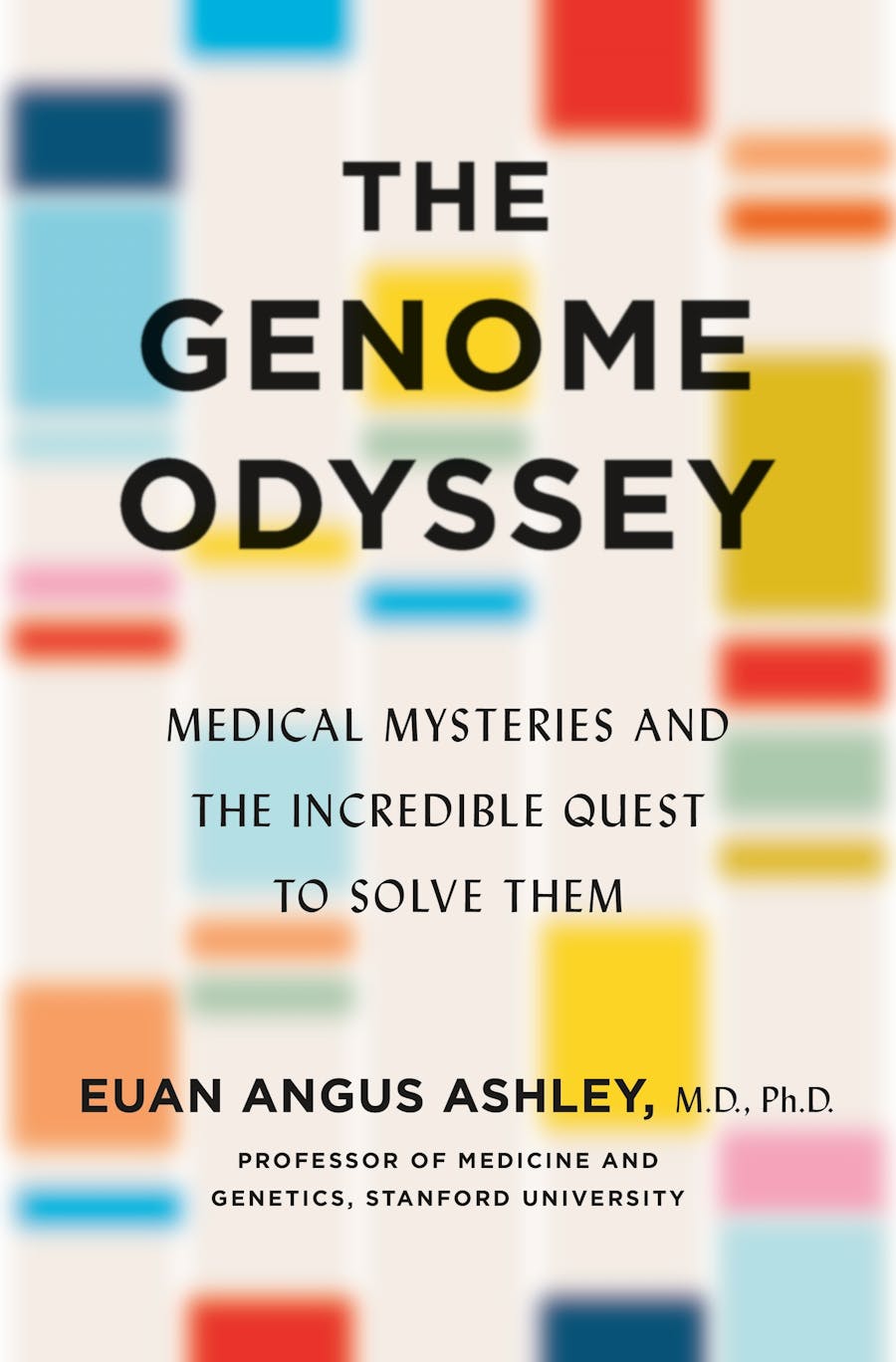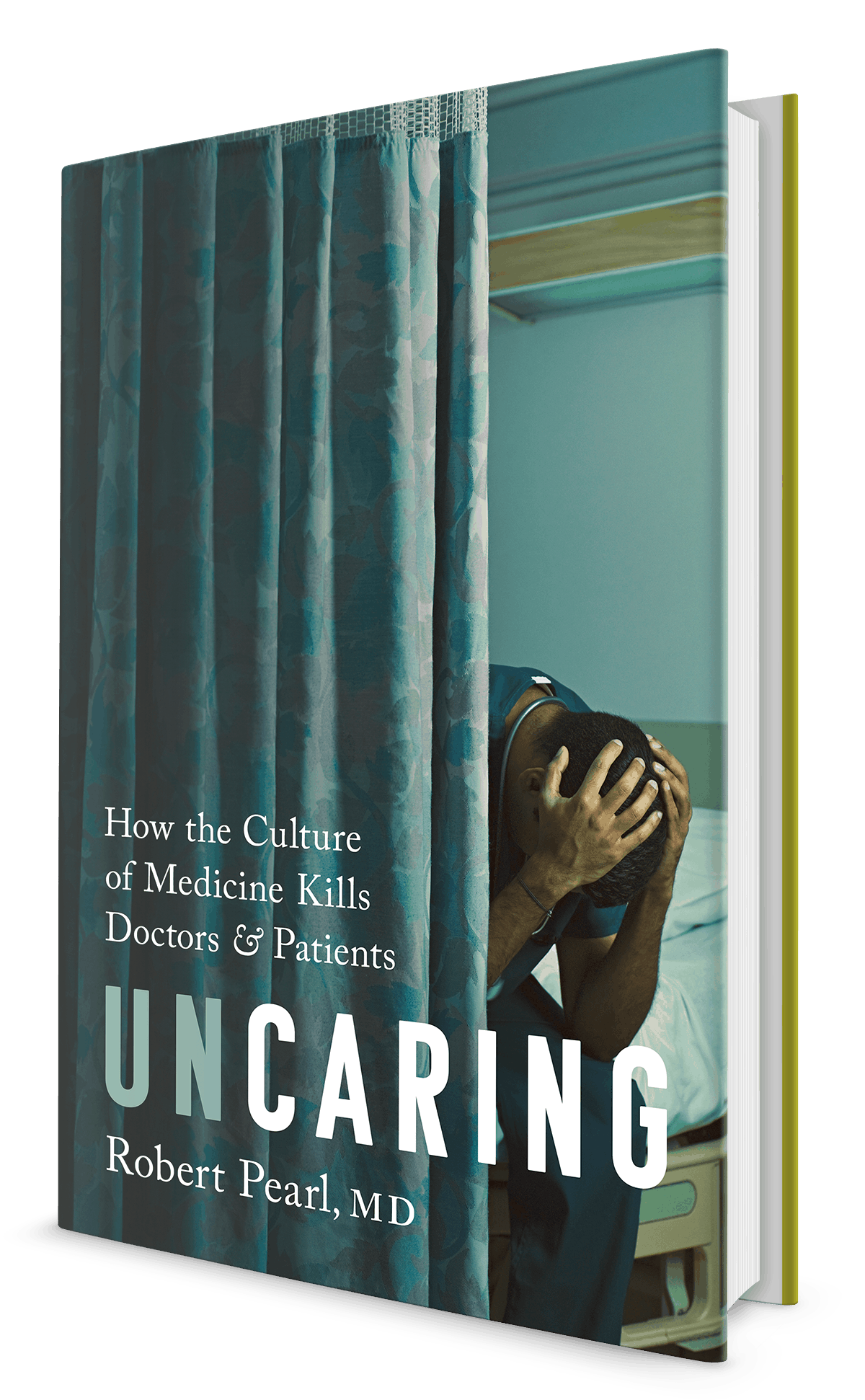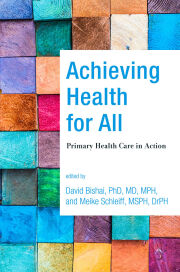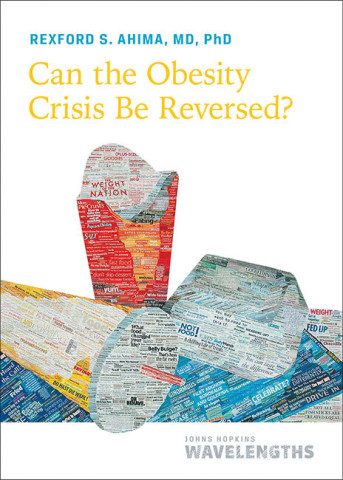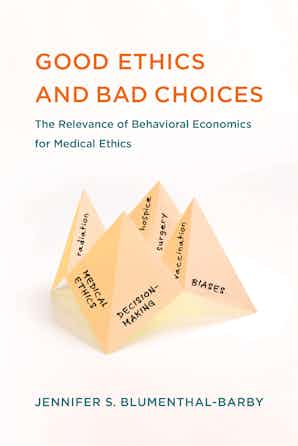The Genome Odyssey. Medical Mysteries and the Incredible Quest to Solve Them
23 de febrer 2022
22 de febrer 2022
Digital health futures
The governance of digital technologies in health and health care must be driven by public purpose, not private profit. Its primary goals should be to address the power asymmetries reinforced by digital transformations, increase public trust in the digital health ecosystem, and ensure that the opportunities offered by digital technologies and data are harnessed in support of the missions of public health and UHC. To achieve these goals, we propose four action areas that we consider game-changers for shaping health futures in a digital world.
First, we suggest that decision makers, health professionals, and researchers consider—and address— digital technologies as increasingly important determinants of health. Second, we emphasise the need to build a governance architecture that creates trust in digital health by enfranchising patients and vulnerable groups, ensuring health and digital rights, and regulating powerful players in the digital health ecosystem. Third, we call for a new approach to the collection and use of health data based on the concept of data solidarity, with the aim of simultaneously protecting individual rights, promoting the public good potential of such data, and building a culture of data justice and equity. Finally, we urge decision makers to invest in the enablers of digitally transformed health systems, a task that will require strong country ownership of digital health strategies and clear investment roadmaps that help prioritise those technologies that are most needed at different levels of digital health maturity.
21 de febrer 2022
Physician culture
Uncaring. HOW THE CULTURE OF MEDICINE KILLS DOCTORS & PATIENTS
The former CEO of Kaiser Permanente Medical Group shines a light on the unseen and often toxic culture of medicine (US and non-US).
Uncaring tells the story of a profession that is both triumphant and dangerously flawed, filled with people who aspire to help others, yet who sometimes act coldly, callously, and indifferently toward the pain of others. This book takes you inside the doctor’s world, revealing unique insights about their training, their daily practices, and the culture they share. It is a book about people striving for perfection and about the impossibility of achieving it. It sheds light on the norms, rules, and expectations of doctors, and shows how culture shapes their thoughts and beliefs. It deciphers their evolving language, symbols, and codes. It highlights what brings doctors together and what isolates them from their colleagues and patients. Finally, this book examines the elements of physician culture that need to be corrected, the ones that should be preserved, and how to accomplish both.
The exploration begins by diving into the meaning and relevance of “culture,” an abstract concept with myriad definitions and applications. Part One, “Diagnosing Physician Culture,” takes you behind medicine’s protective curtain. There you’ll be introduced to the rituals, icons, and beliefs physicians share.
Part Two, “The Physician’s Pain,” explores the complex interplay between the healthcare system and physician culture, showing how both have contributed to a burnout crisis that is now wreaking havoc on US doctors.
Part Three, “Helping or Harming Patients?,” focuses on the impact physician culture has on patients and the ways it contributes to the deterioration of our nation’s overall health.
Having detailed the reasons doctors feel overwhelmed, fatigued, and in perpetual conflict with the world around them, Part Four, “The Social Ladder,” looks at how changes in society are ratcheting up the discomfort physicians experience. Like the proverbial straw that breaks the camel’s back, each new societal influence seems, on the surface, relatively insignificant and completely manageable. But together, these changing norms are proving too much for physicians to handle.
Part Five, “The Evolution of Physician Culture,” offers patients, doctors, business leaders, and elected officials a difficult but necessary choice—one they will need to make in a world now socially, economically, and politically ravaged by the coronavirus. As the nation’s “new normal” takes shape, all the options involving the future of American medicine will be painful and risky. This section outlines those choices and the path toward making US healthcare, once again, the best in the world. Through the process, physician culture has an opportunity to change for the better.
By the end of this book, having observed physician culture under the proverbial microscope, you will be able to see in fine detail what has long remained invisible. You’ll better understand the doctors who provide your medical care and how you can protect yourself from their cultural shortcomings. Some of the stories in this book will inspire you and generate a deeper appreciation for the role doctors play in your life. Others will sadden you, opening your eyes to the many ways that physician culture compromises your health, harms our economy, and holds our country back.
20 de febrer 2022
Economics of pandemics (4)
The Economics of Pandemics. Exploring Globally Shared Experiences
Topics:
The COVID-19 Pandemic as a Globally Shared Experience: An Introduction
Pandemic Economics: Essential Features and Outstanding Questions
Pandemic Analysis I: Global Governance for a Global Pandemic?
Pandemic Analysis II: Governmental Actions During the Pandemic—Lockdown or No Lockdown?
Pandemic Analysis III: The Great Reset, People’s Uprisings, and Other Radical Change Proposals
Pandemic Analysis IV: Is the COVID-19 Pandemic a Doomsday Scenario for Climate Change?
Pandemic Analysis V: The Science and Economics of a Vaccine for Ending the Pandemic
The Economics of Pandemics as a Globally Shared Experience: A Theory
Some Yet Unresolved Questions and Mysteries About the COVID-19 Pandemic
18 de febrer 2022
17 de febrer 2022
The world is fat (2)
Can the Obesity Crisis Be Reversed?
From conclusions:
Ending the obesity epidemic will take both individual and collective action. Neither alone is sufficient. Individuals try to lose weight and keep it off, but the system is working against them. The route to population-wide weight loss will not be through trendy, unsustainable diets. It will be through widespread, appropriate, personalized, and comprehensive approaches.
The first action we all must take, no matter our size, is to educate ourselves about obesity—and you’ve been doing that by reading this book. People need to understand the structural, environmental, and genetic components of obesity. They need to see the ways in which systemic factors contribute to weight gain. The idea that obesity is a choice or a matter of willpower has been thoroughly disproved. The unfortunate fact that many people still believe this actively harms efforts to reduce obesity rates.
The government should first seek to change the public perception of obesity. Obesity is largely a result of structural forces, not just individual actions. A shared awareness of its origins could foster greater support for interventions that allow people to make healthier choices.
People and institutions need to work together to make healthy foods more accessible, affordable, appetizing, and convenient than unhealthy foods. Reversing the obesity crisis will require environments that promote physical activity and social movements that encourage people to get more exercise. We need to devote more resources to preventive efforts for all ages to improve our health.
To reverse the obesity crisis, we will need an all-hands-on-deck approach. Pharmacological advances, surgery, and other treatments should complement new policies, societal practices, and population-wide interventions that promote healthier diets and decrease food consumption. Improving the nation’s health may require implementing policies perceived as restricting personal freedoms that have long been granted to industries and individuals. But these policies will be essential to keeping the population healthy.
For individuals, the goal should be to reach and maintain your optimum weight, meaning the weight at which your body the optimal physical and mental health.
Outline of free ebook:
INTRODUCTION: Struggling with Obesity
CHAPTER 1: How Do People Gain Excess Weight?
CHAPTER 2: Why Are People Getting Heavier?
CHAPTER 3: What Are the Consequences of Obesity?
CHAPTER 4: What Are the Best Ways to Lose Weight?
CHAPTER 5: How to Reverse the Obesity Crisis
16 de febrer 2022
15 de febrer 2022
Geisinger (it is not any fiord) (2)
ProvenCare: How to Deliver Value-Based Healthcare the Geisinger Way
Outline
Why Geisinger?
2 The Problem
3 The Fix
4 Effective Governance
5 Getting Started
6 Enabling Change
7 ProvenCare Acute: Taking It to the Next Step
8 ProvenCare Chronic
9 ProvenHealth Navigator: Geisinger’s Advanced Medical Home
0 Leading and Managing a Successful Practice Transformation
1 ProvenCare Biologics
2 ProvenExperience
3 Future Vision
14 de febrer 2022
Understanding Ethics of AI
The Oxford Handbook of ETHICS OF AI
The approach to the ethics of AI that runs through this handbook is contextual in four senses:
• it locates ethical analysis of artificial intelligence in the context of other modes of normative analysis, including legal, regulatory, philosophical, and policy approaches,
• it interrogates artificial intelligence within the context of related modes of technological innovation, including machine learning, Big Data, and robotics,
• it is interdisciplinary from the ground up, broadening the conversation about the ethics of artificial intelligence beyond computer science and related fields to include other fields of scholarly endeavor, including the social sciences, humanities,and the professions (law, medicine, engineering, etc.), and
• it invites critical analysis of all aspects of—and participants in—the wide and continuously expanding artificial intelligence complex, from production to commercialization to consumption, from technical experts to venture capitalists to self-regulating professionals to government officials to the general public.
Outline
Part I. Introduction & Overview
1. The Artificial Intelligence of Ethics of AI: An Introductory Overview
2. The Ethics of Ethics of AI: Mapping the Field
3. Ethics of AI in Context: Society & Culture
Part II. Frameworks & Modes
4. Why Industry Self-regulation Will Not Deliver 'Ethical AI': A Call for Legally Mandated Techniques of 'Human Rights by Design'
5. Private Sector AI: Ethics and Incentives
6. Normative Modes: Codes & Standards
7. Normative Modes: Professional Ethics
Part III. Concepts & Issues
8. Fairness and the Concept of 'Bias'
9. Accountability in Computer Systems
10. Transparency
11. Responsibility
12. The Concept of Handoff as a Model for Ethical Analysis and Design
13. Race and Gender
14. The Future of Work in the Age of AI: Displacement, Augmentation, or Control?
15. The Rights of Artificial Intelligences
16. The Singularity: Sobering up About Merging with AI
17. Do Sentient AIs Have Rights? If So, What Kind?
18. Autonomy
19. Troubleshooting AI and Consent
20. Is Human Judgment Necessary?
21. Sexuality
IV. Perspectives & Approaches
22. Computer Science
23. Engineering
24. Designing Robots Ethically Without Designing Ethical Robots: A Perspective from Cognitive Science
25. Economics
26. Statistics
27. Automating Origination: Perspectives from the Humanities
28. Philosophy
29. The Complexity of Otherness: Anthropological contributions to robots and AI
30. Calculative Composition: The Ethics of Automating Design
31. Global South
32. East Asia
33. Artificial Intelligence and Inequality in the Middle East: The Political Economy of Inclusion
34. Europe's struggle to set global AI standards
Part V. Cases & Applications
35. The Ethics of Artificial Intelligence in Transportation
36. Military
37. The Ethics of AI in Biomedical Research, Medicine and Public Health
38. Law: Basic Questions
39. Law: Criminal Law
40. Law: Public Law & Policy: Notice, Predictability, and Due Process
41. Law: Immigration & Refugee Law
42. Education
43. Algorithms and the Social Organization of Work
44. Smart City Ethics
10 de febrer 2022
Unbiased Bioethics
Good Ethics and Bad Choices. The Relevance of Behavioral Economics for Medical Ethics
A book on how behavioral economics challenges some of the most fundamental tenets of medical ethics.
Go to Chapter 2: Bad Decisions? What Behavioral Economics Means for Patient Autonomy, Decision Quality, and Well-Being. Great topic.
The predominant ethos in medicine and medical ethics is to assume that patients are capable of making autonomous decisions that promote their own personal goals and values so long as they are properly informed of the options and their risks/benefits. Behavioral economics and the examples of decisional heuristics and biases discussed in the previous chapter significantly challenge this assumption. Behavioral economics shows that patients’ decisions can fail to be autonomous or to improve their well-being in ways beyond the usual ones that clinicians and bioethicists worry about (e.g., poorly informed consent, coercion, weakness of will). Specifically, in this chapter, I will argue that behavioral economics demonstrates that patients’ decision-making is often at risk for being (1) nonautonomous or autonomy impaired, (2) of poor quality, and (3) harmful to patients and their interests
A must read.
09 de febrer 2022
08 de febrer 2022
A new constitutional narrative
Law, Violence and Constituent Power. The Law, Politics and History of Constitution Making
The work argues that rather than the idea of a constitution being the result of political participation and deliberation, all power instead is based on violence. Hence the creation of a constitution is actually an act of coercion, where, through violence, one social group is able to impose itself over others. The book advocates that the presence of violence be used as an assessment of whether genuine constitutional transformation has taken place, and that the legitimacy of a constitutional order should be dependent upon the absence of killing and violence.
The main thesis of this book is that political orders are founded on violence and that constitutions, including those establishing liberal democracies, are the legal translation of this seminal coercion. In spite of the huge literature that has in recent times exploded around the constitution-making processes, the factor of violence has been scarcely considered in the assessment on the appearance of a brand-new constitutional framework. Instead, as had been developed by constitutionalism since the American and French eighteenth-century transitions, scholars have been more centred in observing the public involvement in the drafting of fundamental rules and, thus, associating popular mobilization and deliberation with constitutional legitimacy. Struggles were focused in building a narrative able to justify why a constitution enjoys supremacy over other popular representative institutions. To put it in a very reductive way: “if a constitution prevails over other norms adopted by the People’s representatives, that happened because the constitution was not passed by the representatives but by the People itself.” Here is, in a nutshell, the popular narrative on which constitutional legitimacy is grounded. But, as a historical analysis reveals, it has been violence, and not a collective action of “the People,” which usually (or always) has surrounded the formation of a constitution and ensured its effectiveness.
My idea is that, if instead of focusing on the devices of popular participation (elections to a constituent assembly, constitutional conventions, round-tables, or referenda) we pay attention to the coercions involved in such processes, we should conclude that wars, genocides, killings, or massive infringements of basic human rights cancel any narrative on the democratic grounds of fundamental laws.
Agree. In chapter 5 you'll find details about Secessionism in Catalonia, well explained.
Another book on the same topic:
07 de febrer 2022
Pharma, big pharma (5)
The Price of Health. The Modern Pharmaceutical Enterprise and the Betrayal of a History of Care
The Price of Health is the reveals the story of how the pharmaceutical enterprise took shape and led to the present crisis. The reputation of the pharmaceutical industry is suffering from self-inflicted wounds and its continued viability, indeed survival, is increasingly questioned. Yet the drug makers do not shoulder all the blame or responsibility for the current price crisis. Deeply researched, The Price of Health gives us hope as to how we can still right the ship, even amidst the roiling storm of a global pandemic.
06 de febrer 2022
Vaccines makers (2)
The Vaccine. Inside the Race to Conquer the COVID-19 Pandemic
The Vaccine draws back the curtain on one of the most important medical breakthroughs of our age; it will reveal how Doctors Sahin and Türeci were able to develop twenty vaccine candidates within weeks, convince Big Pharma to support their ambitious project, navigate political interference from the Trump administration and the European Union, and provide more than three billion doses of the Pfizer/BioNTech vaccine to countries around the world in record time.
